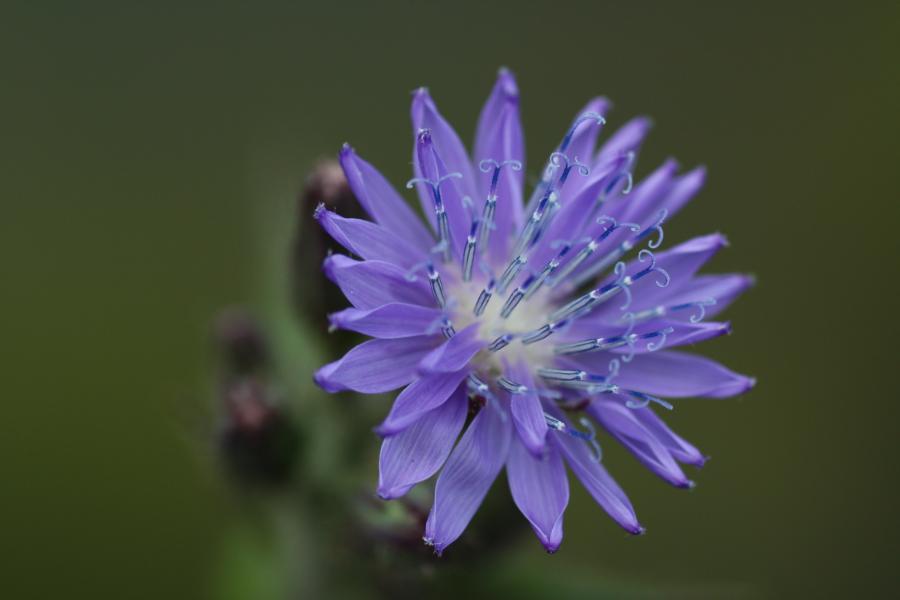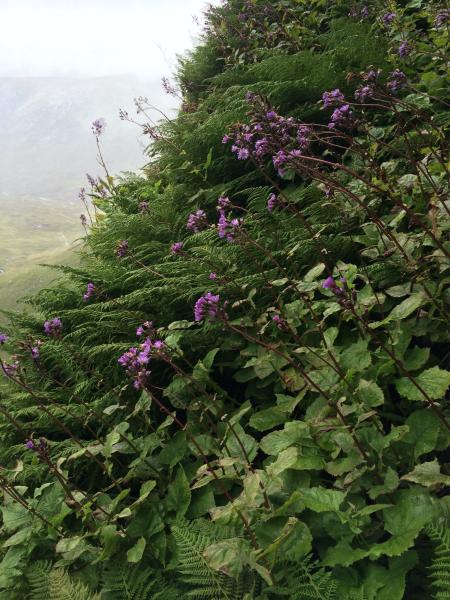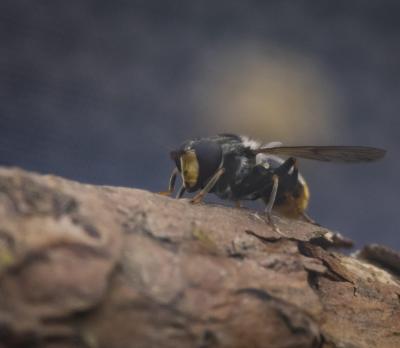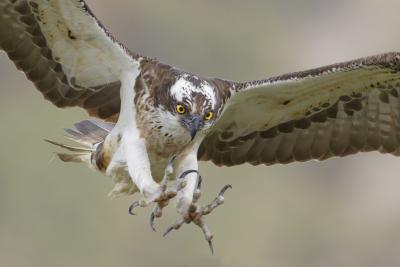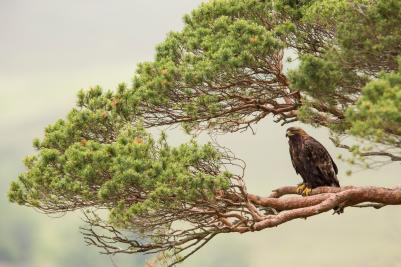Alpine blue-sow-thistle
Cicerbita alpina
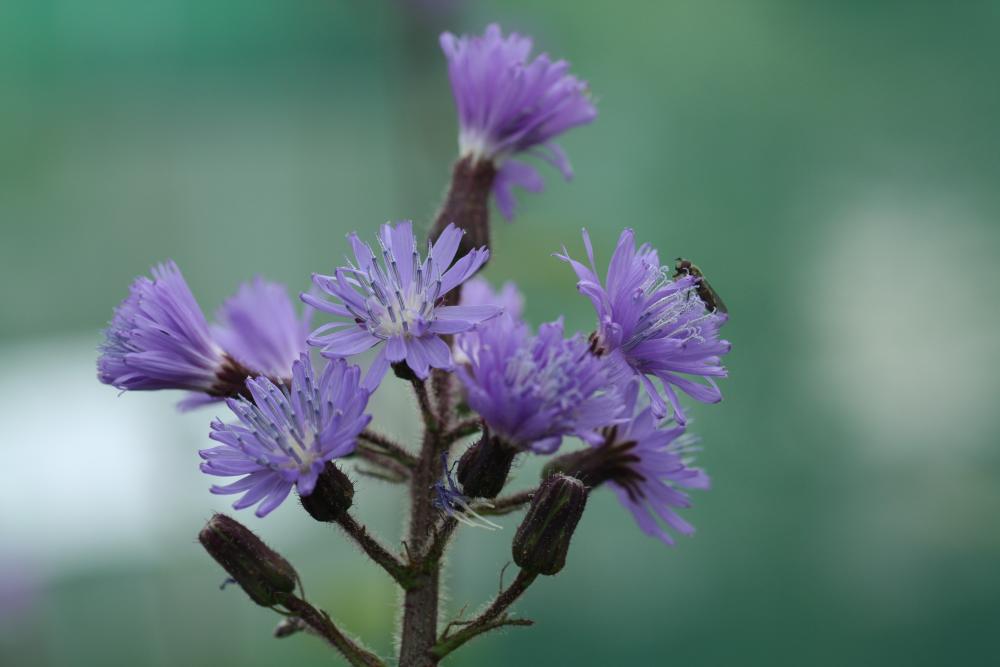
The alpine blue-sow-thistle is one of the UK’s rarest plants. When conditions allow it grows in rich mountain grassland and pine and birch woodlands. A few clusters of blue-sow-thistle sit atop remote ledges and gullies on the eastern side of the National Park.
Factsheet
Best time to spot: June to September
The alpine blue-sow-thistle is a tall plant with an erect stem. Fully grown, it can reach between 50 and 150cm in height, averaging around 80cm. Between June and September, purple-blue flowers (approximately 2.5cm wide) bloom within a circle of tiny leaves, known as bracts. The petals of the flower are tongue-shaped - long, almost rectangular, with toothed tips.
Fine glandular hairs grow from the stem, which is a feature that occurs in only 30% of plants. These hairs contain metabolites which help protect the plants from threats such as insects and pathogens. The plant’s seeds are also found in unbranched hairs.
From slugs and voles to livestock and deer, many herbivores find this plant extremely palatable. Despite doing well in alpine woods, streams, rich-soil hollows and meadows in other countries, in Scotland the only surviving plants are in high-altitude locations away from hungry mouths - usually on cliff ledges between 1,000 and 1,300 metres above sea level. However, the conditions in these locations appear to be less than ideal, as the blue-sow-thistle often suffers from wind exposure and has been found to have browning leaves by the time flowering occurs in July and August.
Did you know?
The alpine blue-sow-thistle is one of the UK’s rarest plants. When conditions allow it grows in rich mountain grassland and pine and birch woodlands. A few clusters of blue-sow-thistle sit atop remote ledges and gullies on the eastern side of the National Park.
Factsheet
Best time to spot: June to September
The alpine blue-sow-thistle is a tall plant with an erect stem. Fully grown, it can reach between 50 and 150cm in height, averaging around 80cm. Between June and September, purple-blue flowers (approximately 2.5cm wide) bloom within a circle of tiny leaves, known as bracts. The petals of the flower are tongue-shaped - long, almost rectangular, with toothed tips.
Fine glandular hairs grow from the stem, which is a feature that occurs in only 30% of plants. These hairs contain metabolites which help protect the plants from threats such as insects and pathogens. The plant’s seeds are also found in unbranched hairs.
From slugs and voles to livestock and deer, many herbivores find this plant extremely palatable. Despite doing well in alpine woods, streams, rich-soil hollows and meadows in other countries, in Scotland the only surviving plants are in high-altitude locations away from hungry mouths - usually on cliff ledges between 1,000 and 1,300 metres above sea level. However, the conditions in these locations appear to be less than ideal, as the blue-sow-thistle often suffers from wind exposure and has been found to have browning leaves by the time flowering occurs in July and August.
Did you know?
In the UK, the alpine blue-sow-thistle is extremely rare and considered critically endangered. Only four known wild populations still exist in Scotland, and all of these are in the Cairngorms National Park. A fifth population at Canness Glen, in the east of the region, became extinct in the 1970s. That’s why, in 1975, the plant was listed as a protected species on the UK’s Conservation of Wild Creatures and Wild Plants Act.
Grazing, alongside habitat loss, is one of the main drivers of the plant’s decline. Conservation action is now focusing on reintroducing the species to lower, sheltered sites in the National Park that are free from grazing pressures.
In 2019, NatureScot and the Royal Botanic Gardens Edinburgh chose the Cairngorms National Park to host a project striving to restore species numbers. The species is being planted at several sites to nurture new populations of alpine blue-sow-thistles. The organisations hope to promote education around the rare plant and recent conservation efforts, but also gain greater insight into the plant’s genetics - including its ability to weather lower-altitude conditions - and create self-sustaining populations for generations to come.





